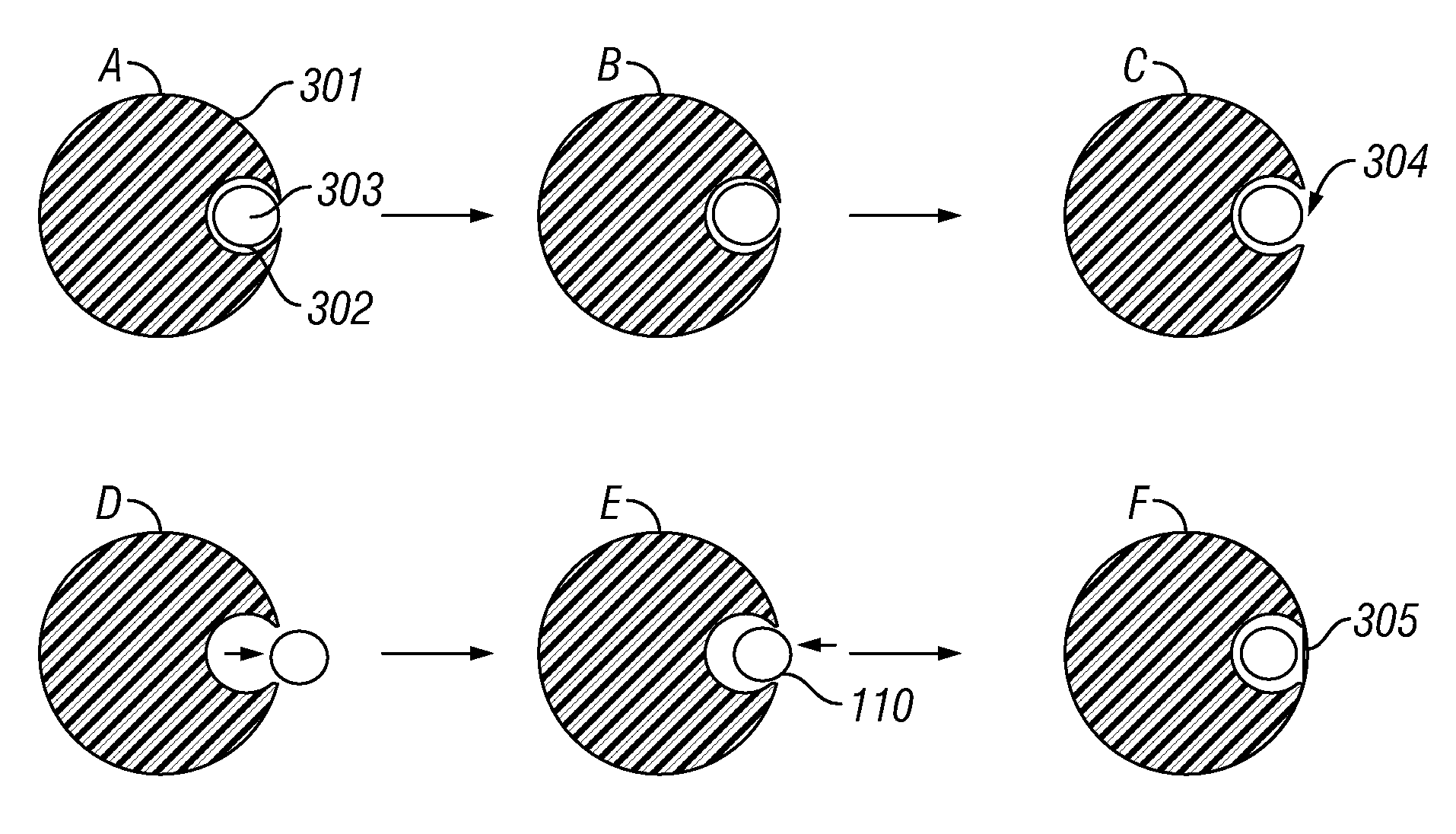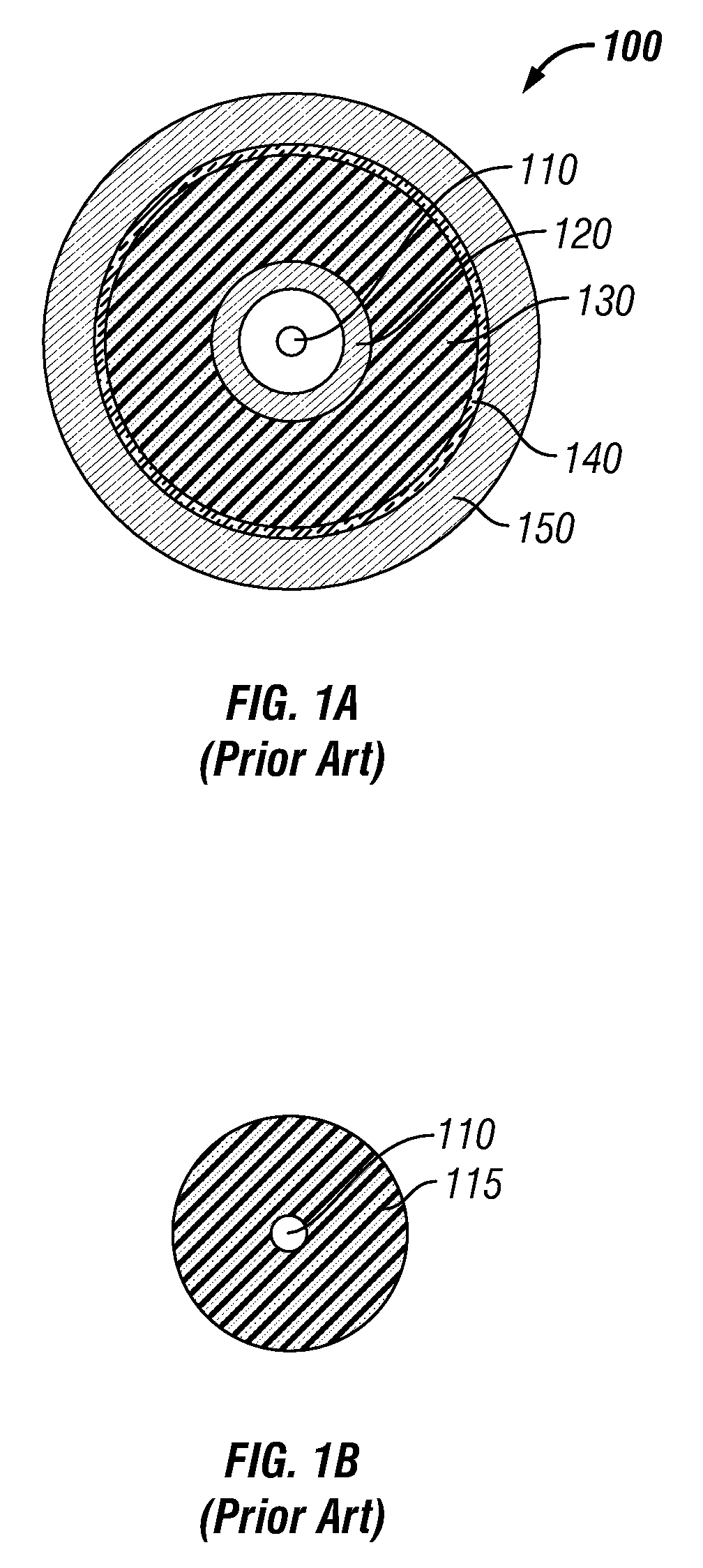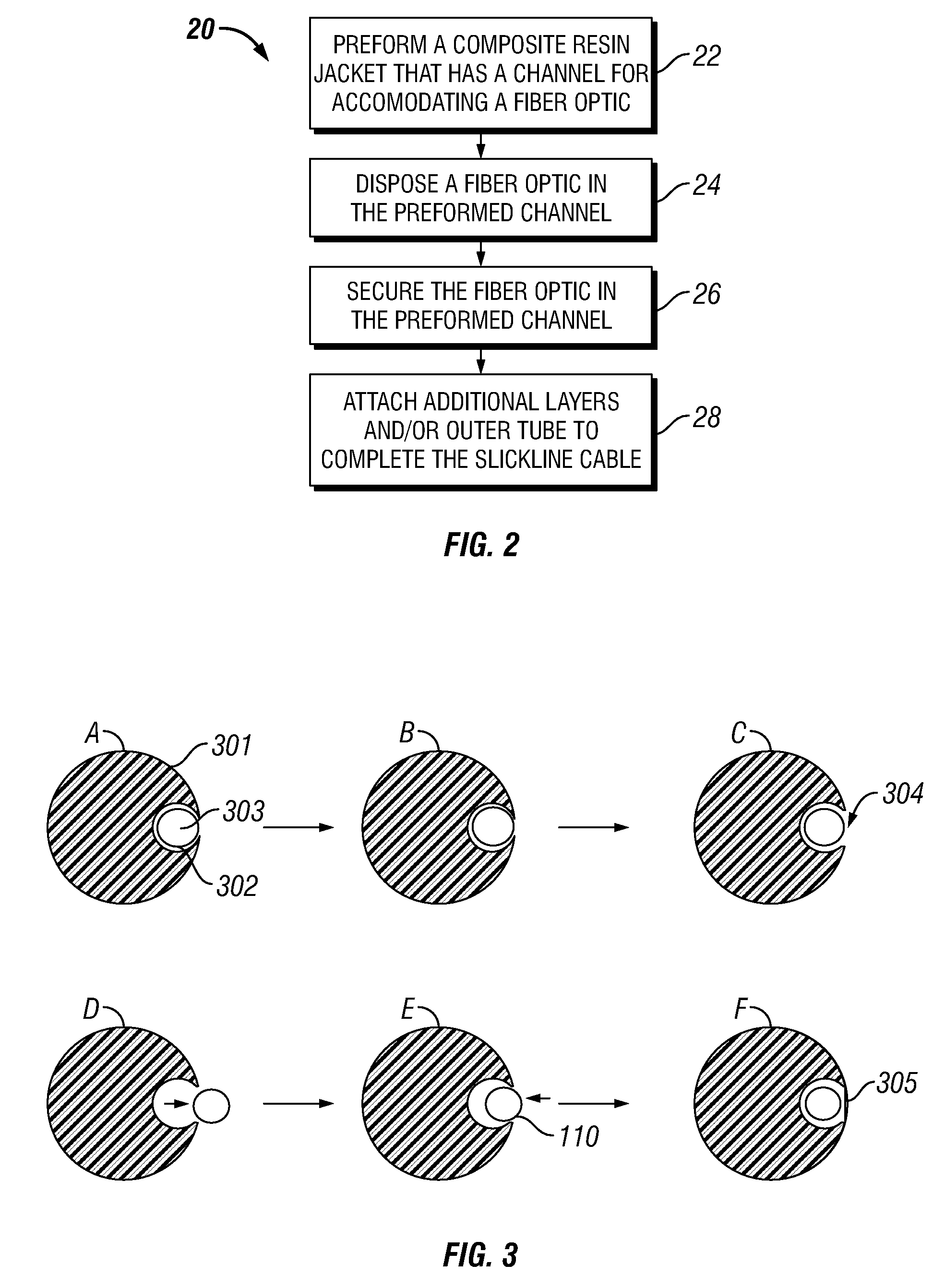High strength-to-weight-ratio slickline and multiline cables
a technology of slickline cables and multi-line cables, applied in the direction of cables, insulated conductors, instruments, etc., can solve the problems of reducing data carrying capacity, hydrolytic attack on glass in the presence of water, and oilfield operations are vulnerable to damage,
- Summary
- Abstract
- Description
- Claims
- Application Information
AI Technical Summary
Benefits of technology
Problems solved by technology
Method used
Image
Examples
Embodiment Construction
[0034]The foregoing disclosure and description of the invention is illustrative and explanatory thereof and it can be readily appreciated by those skilled in the art that various changes in the size, shape and materials, as well as in the details of the illustrated construction or combinations of the elements described herein can be made without departing from the spirit of the invention. In addition, the cables can also comprise some components other than the ones already cited. In the summary of the invention and this detailed description, each numerical value should be read once as modified by the term “about” (unless already expressly so modified), and then read again as not so modified unless otherwise indicated in context.
[0035]Embodiments of the present invention relate to slickline cables, particularly slickline cables that have high strength-to-weight ratios, and processes for making such cables. To avoid exposure of optical fibers to high temperatures during the manufactur...
PUM
 Login to View More
Login to View More Abstract
Description
Claims
Application Information
 Login to View More
Login to View More - R&D
- Intellectual Property
- Life Sciences
- Materials
- Tech Scout
- Unparalleled Data Quality
- Higher Quality Content
- 60% Fewer Hallucinations
Browse by: Latest US Patents, China's latest patents, Technical Efficacy Thesaurus, Application Domain, Technology Topic, Popular Technical Reports.
© 2025 PatSnap. All rights reserved.Legal|Privacy policy|Modern Slavery Act Transparency Statement|Sitemap|About US| Contact US: help@patsnap.com



